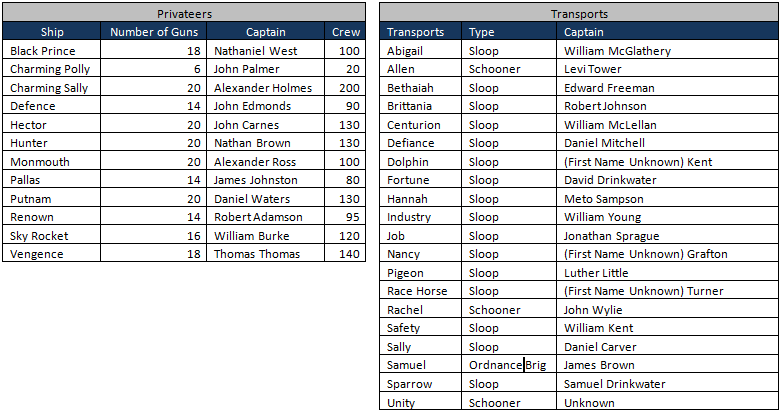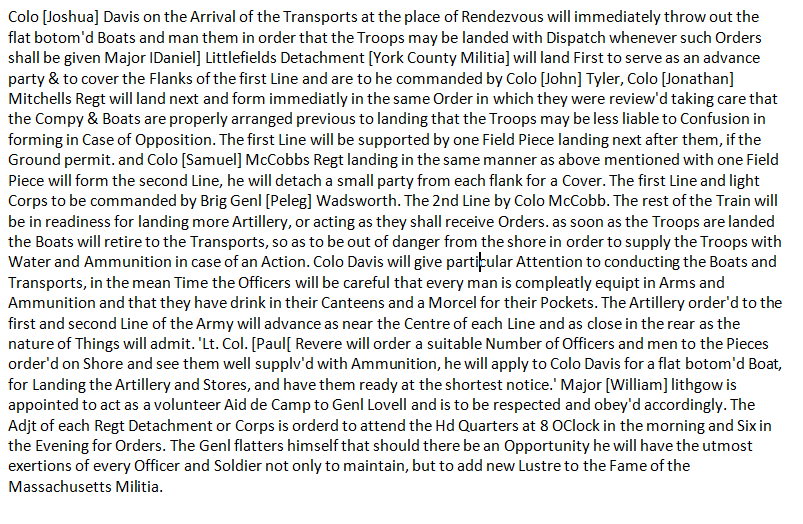Revolutionary War - E24: Disaster in Maine: The Penobscot Gamble
The Penobscot Expedition was one of the most ambitious—and ultimately disastrous—naval campaigns of the American Revolution. What should have been a swift victory against the British turned into a chaotic struggle marked by poor coordination, internal disputes, and missed opportunities.
Despite early successes, like the Marines’ capture of Banks Island, hesitation and miscommunication eroded the expedition’s momentum. Meanwhile, the British strengthened their defenses daily, turning their outpost into a fortress.
*************
Visit HistoryoftheMarineCorps.com to subscribe to our newsletter, explore episode notes and images, and see our references. Follow us on social media for updates and bonus content: Facebook and Twitter (@marinehistory) and Instagram (@historyofthemarines).
Visit AudibleTrial.com/marinehistory for a free audiobook and a 30-day trial.
Resources:
Buker, G. (2016). The Penobscot Expedition: Commodore Saltonstall and the Massachusetts Conspiracy of 1779. Paw Prints.
Chávez, T. E. (2003). Spain and the independence of the United States: An intrinsic gift. University of New Mexico Press.
Coggeshall, J. L. (1997). The fireship and its role in the Royal Navy.
Conley, P. T. (2010). Rhode Island’s founders: From settlement to statehood. History Press.
Continental Journal (Boston), 2 September 1779.
Diary of Richard Smith in the Continental Congress, 1775-1776. (n.d.). https://www.phmc.pa.gov/Archives/Pages/default.aspx
Dictionary of American Naval Fighting Ships.
Feld, J. (2017). John Paul Jones' Locker: The Mutinous Men of the Continental Ship Ranger and the Confinement of Lieutenant Thomas Simpson. Naval History and Heritage Command.
Fischer, D. H. (2006). Washington’s crossing. Oxford University Press.
FranMott, F. L. (1944). The newspaper coverage of Lexington and Concord. University Press.
Franklin Papers.
Fredriksen, J. C. (2006). Revolutionary War almanac. Facts On File.
Gray, E. G., & Kamensky, J. (2015). The Oxford Handbook of the American Revolution. Oxford University Press.
Henkels, S. V. (1904). Administrators sale, by order of Ephraim Lederer, attorney, estate of Moses Polock, deceased, the oldest booksellers in the U.S. embracing rare and scarce Americana ... at the book auction rooms of Davis & Harvey.
Holton, W. (2000). Forced founders: Indians, debtors, slaves, and the making of the American Revolution in Virginia. University of North Carolina Press.
Huffman, J. M. (2013). Americans on Paper: Identity and Identification in the American Revolution. Doctoral dissertation, Harvard University.
Journals of the Continental Congress 1774-1789.
Lincoln, C. H. (1903). A calendar of John Paul Jones manuscripts in the Library of Congress. Government Printing Office.
Logbooks of the U.S. Navy at the National Archives.
Marines in the Revolution: A history of the Continental Marines in the American Revolution, 1775-1783. (n.d.). http://ibiblio.org/anrs/docs/E/E3/ndar_v04p01.pdf
Mott, F. L. (1944). The newspaper coverage of Lexington and Concord.
Munn, D. C. (1941). Battles and skirmishes of the American Revolution in New Jersey. Retrieved from https://www.state.nj.us/dep/njgs/enviroed/oldpubs/battles.pdf
Nash, G. (1991). The original journal of General Solomon Lovell, kept during the Penobscot Expedition, 1779: With a sketch of his life. Filmed by the Genealogical Society of Utah.
Nester, W. R. (2004). The frontier war for American independence. Stackpole Books.
Peckham, H. H. (1974). The toll of independence: Engagements and battle casualties of the American Revolution. University of Chicago Press.
Papers of William Vernon and the Navy Board, 1776-1794, United States. (n.d.).
Reed, J. (1884). General Joseph Reed's narrative of the movements of the American Army in the neighborhood of Trenton in the winter of 1776-77. The Pennsylvania Magazine of History and Biography.
Robert Morris to Richard Henry Lee, 29 December 1776, Lee Papers, University of Virginia. (n.d.).
Silverstone, P. H. (2006). The sailing navy: 1775-1854. Routledge.
Smith, C. R., & Waterhouse, C. H. (1975). Marines in the Revolution: A history of the Continental Marines in the American Revolution, 1775-1783. History and Museums Division, Headquarters, U.S. Marine Corps.
Stryker, W. S. (1898). Battles of Trenton and Princeton. Houghton, Mifflin.
“To George Washington from Colonel John Cadwalader, 26 December 1776.” (n.d.). Founders Online, National Archives. Retrieved April 11, 2019.
Tucker, P. T. (2016). George Washington’s surprise attack: A new look at the battle that decided the fate of America. Skyhorse Publishing.
Tucker, S., Arnold, J. R., Wiener, R., Pierpaoli, P. G., Nelson, P. D., & Piecuch, J. (2018). American Revolution: The definitive encyclopedia and document collection. ABC-CLIO.
Walker, P. K. (2002). Engineers of independence: A documentary history of the Army engineers in the American Revolution, 1775-1783. University Press of the Pacific.
Wood, G. S. (1993). The radicalism of the American Revolution. Vintage Books.
Wright, R. K. (1989). The Continental Army. Center of Military History, U.S. Army.
Transport and Privateer Ships During Penobscot Expedition
Penobscot Plan



